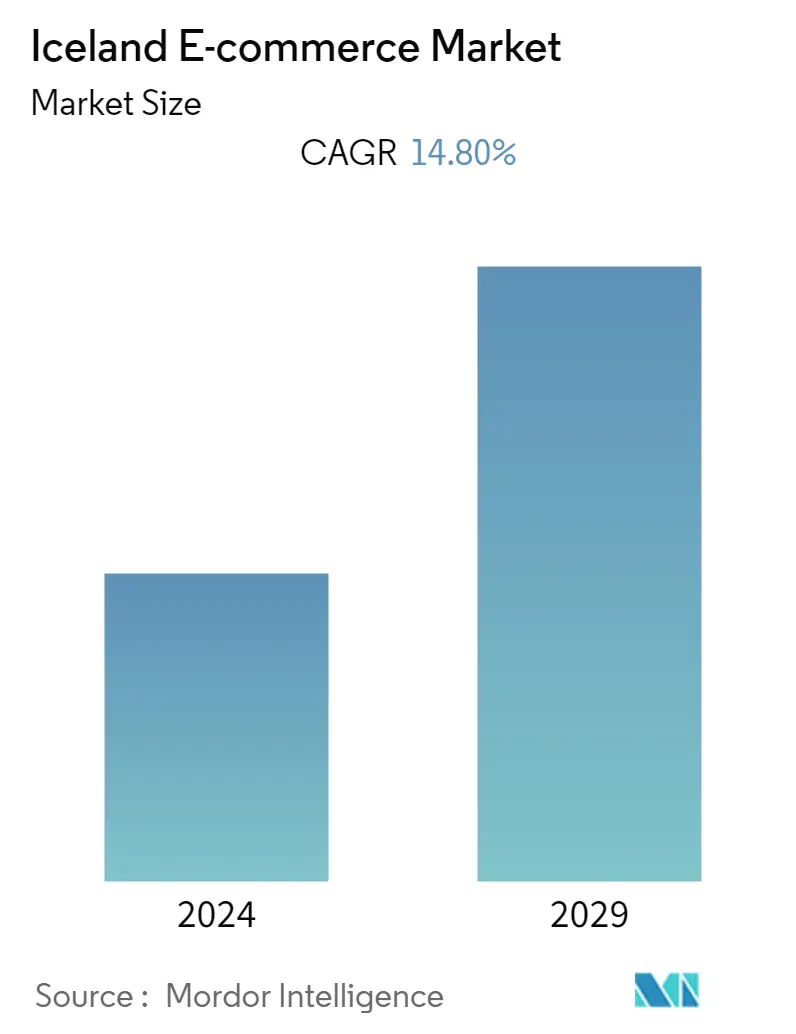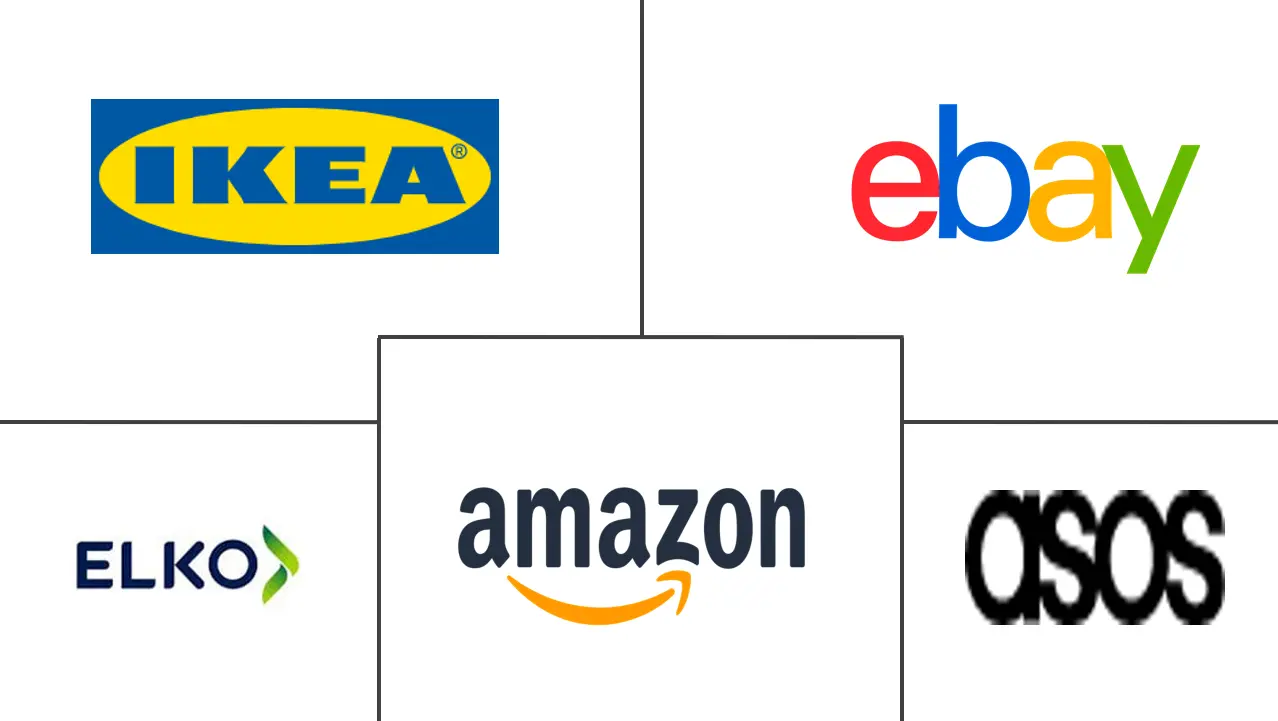Market Size of Iceland E-commerce Industry

| Study Period | 2019 - 2029 |
| Base Year For Estimation | 2023 |
| Forecast Data Period | 2024 - 2029 |
| Historical Data Period | 2019 - 2022 |
| CAGR | 14.80 % |
| Market Concentration | Low |
Major Players
*Disclaimer: Major Players sorted in no particular order |
Need a report that reflects how COVID-19 has impacted this market and its growth?
Iceland E-commerce Market Analysis
The Iceland e-commerce market is expected to register a CAGR of 14.8% during the period 2022-2027. The primary factor driving the growth of the market in the region is the high rate of urbanization and intense Internet penetration, among others.
- Icelanders have very high internet usage, close to 99%, and in the past couple of years, online shopping has increased significantly, both from abroad and locally. Foreign e-commerce platforms are prevalent in Iceland, offering low-cost products across the region. The consumers in Iceland are also increasingly purchasing goods from American and European retailers, mainly fashion-related products, baby and beauty products, and electronic equipment.
- Furthermore, the high rate of urbanization, close to 94% (as reported by Hootsuite), is also paving the way for better infrastructure for the delivery of products by e-commerce companies in the region. With the high-tech and IT industries flourishing in Iceland, e-commerce is rapidly growing in Iceland as companies are increasingly offering their services online. This is further expected to boost the e-commerce market in the region.
- Digital marketing is widely used in Iceland. Many smaller e-commerce companies only advertise on social media, primarily Facebook, and many use social media influencers for marketing their products and services. Larger and more established e-commerce companies use digital marketing with a combination of conventional marketing.
- However, Iceland follows European e-commerce rules and regulations. A significant hindrance for online businesses in the region is high shipping costs, a high percentage of Value Added Tax (VAT), and handling fees charged by the local postal services, which can hamper the growth of the e-commerce market in the region.
- At the time of the COVID-19 pandemic, when most of the physical and brick-and-mortar stores were closed, the e-commerce market in the region grew owing to an increase in the strong demand for groceries, home furnishing, and pharmacy products. Many brick-and-mortar businesses introduced online channels for shopping in the region.
